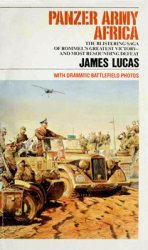The Native name of the Beaver, Tsattine, means “those who live among the beavers,” given the former abundance of that mammal in their territory near the Peace River in present-day northwestern Alberta, Canada. The Native name for that river, in fact, was Tsades, or “river of beavers.” The Beaver, like other ATHAPASCANS in the region, are classified as SUBARTIC INDIANS. Based on dialectal similarities, it is assumed that the Beaver in precontact times were one people with the Sekani, who migrated westward into the Rocky Mountains, and the SARCEE, who migrated southward onto the northern plains.
The Beaver, as was the case with other Subarctic peoples, were nomadic, following game seasonally. They fished the lakes and rivers but depended more on game for sustenance. They hunted moose, caribou, beavers, and rabbits, especially on the prairies south of the Peace River and east of the Rockies, but also across the mountains into present-day British Columbia. They sometimes roamed far enough south to take buffalo. Hunting methods included bows and arrows, spears, and snares. Cone-shaped calls made out of birch bark were used to attract animals. Unlike PLAINS INDIANS, who used buffalo hides, the Beaver were more likely to use moose hide or caribou hide to cover their conical dwellings, which resembled small tipis, usually erected along a river or lake. They also were known to use sphagnum moss as an insulating covering. In addition, tribal members built temporary brush shelters, especially lean-tos. Their clothing was typically of moose skin. They cooked meat in vessels of spruce bark, woven spruce roots, and birch bark using heated stones. A number of families were loosely organized into bands, each with a headman and each with specific hunting territory. Transportation technology included canoes covered with spruce bark or birch bark, snowshoes, and toboggans.
Beaver religion included a belief in guardian spirits. Tribal members slept with their heads pointing east, believing that dreams and visions came from the rising Sun. However, the band shaman, sometimes referred to as the “dreamer,” slept with his head pointing west toward the setting Sun. Youths would fast in preparation for discovering their particular guardian spirits. At a festival held twice a year, food was sacrificed on a specially prepared fire to bring about future prosperity. The Beaver creation myth relates how humans crawled through a log to reach Earth. Regarding burial rites, the dead were placed in a roll of birch bark in trees or on platforms. Relatives would express grief by self-mutilation, with men lacerating their chests and piercing their arms and legs; women were known to sever a joint of a finger. Possessions were typically given away or destroyed. Following exposure to Christianity, the Beaver began a tradition of prophets, these individuals assuming what had been the role of the shaman in helping individuals or the band make decisions.
The original homeland of the Beaver extended as far east as Lake Athabaska and the Athabaska River valley. By about 1760, however, the Beaver bands had been driven westward by the Algonquian-speaking CREE who had been equipped with firearms by traders of the Hudson’s Bay Company. The Beaver were among the first northern Athapascans to have contact with non-Indians. Early representatives of the North West Company, such as Peter Pond in the 1770s and Alexander Mackenzie in the 1790s, developed the fur trade in the region. In 1799, Makenunatane (Swan Chief) of the Beaver requested a fur-trading post among his people and expressed curiosity about Christianity.
In 1899, the Canadian government negotiated Treaty 8 with the Beaver, Cree, and CHIPEWYAN, in which the three tribes ceded huge tracts of land. A number of bands maintain tribal identity in Alberta and British Columbia.




 World History
World History









